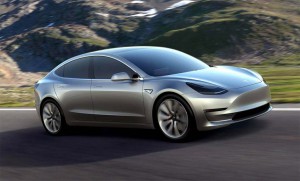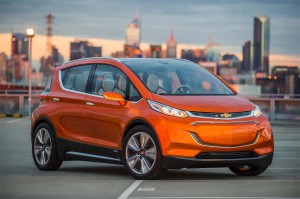
Two dozen countries from around the globe, but not the U.S., pledged to help boost sales of EVs to 30% of total new vehicle sales by 2030.
With China leading the way, energy ministers from two dozen industrialized countries around the world agreed last week to work towards policies and initiatives that designed to boost the total sales of electric vehicles to 30% of new vehicle sales by 2030.
The campaign was announced at the annual Clean Energy Ministerial meeting, which was held in Beijing last week.
As it has in the past, the United States sat in on in the meeting even though U.S. participation was overshadowed by the Trump administration’s decision to withdraw from the Paris Climate Accord.
CEM8 resulted in 31 specific announcements related to leadership or participation in campaigns related to energy demand and energy systems and integration. These announcements including the new CEM campaign on electric vehicles.
China will lead a new EV30@30 campaign, designed to increase the sales of electric vehicles to 30% of new vehicle sales by 2030, in close collaboration with the IEA. The EV campaign builds on the significant progress made in the transport sector recently.
Worldwide the number of electric cars continues to increase, reaching 2 million in 2016. The new EV30@30 campaign will be carried out in close conjunction with governments, car makers, international organizations and other stakeholder groups, including other CEM initiatives where appropriate.
(From car to grid: automakers lining up new uses for old EV batteries. Click Here to check out the story.)
Nine CEM members announced they would join the EV campaign, including Canada, China, Finland, France, India, Japan, Mexico, Norway and Sweden. California Governor Jerry Brown also attended the meeting in Beijing to voice the state’s continuing support for clean energy goals.
The new ministerial-level policy, which means it has support of national governments in several countries, is expected to put additional pressure on carmakers to sell electric vehicles even though the industry has had a difficult time making EVs acceptable to the motoring public in a variety of countries, including major markets such as China and the U.S.
A new CEM campaign on advanced power plant flexibility, which would increase the availability of energy from wind and solar power by expanding the capacity of storage batteries, which could store electricity until it was needed.
China, Denmark and Germany will lead the new CEM campaign on Advanced Power Plant Flexibility (APPF), which is designed to enhance the operational flexibility of power plants so that “they can better integrate the increasing share of electricity generated by renewable energy technologies,” the APPF participants will work closely with the International Energy Agency or IEA.
(Click Here to see more about Daimler’s new $1.15 billion EV battery plant.)
The APPF campaign is expected to build upon the work of the CEM’s Multilateral Solar and Wind Working Group and the CEM’s 21, organizers of the CEM conference said.
The CEM is the only annual meeting of energy ministers dedicated to clean energy supported by year-round work with energy supply, energy demand, energy systems, and cross-cutting issues.
CEM members currently account for approximately 90% of global energy investments and 75% of global greenhouse gas emissions who have made clean energy advancement and participate on a voluntary basis to achieve this goal.
Ministers and high-level representatives of Australia, Brazil, Canada, People’s Republic of China, Chile, Denmark, Finland, France, Germany, India, Indonesia, Italy, Japan, Mexico, Norway, Republic of Korea, Russia, Saudi Arabia, South Africa, Sweden, the United Arab Emirates, the United Kingdom, the United States and the European Commission on behalf of the European Union participated in the 2017 meeting with Beijing.
(To see why GM’s Reuss is predicting the company will build the first profitable EV, Click Here.)
The next CEM meetings will be jointly hosted by the European Commission, Denmark, Finland, Norway, and Sweden in 2018 while the 10th Clean Energy Ministerial will be held in Canada in 2019.


How many of these Ministers personally own electric vehicles? What type and how many vehicles were used to transport them around China? How many private jets were used to get them to China?
It will take a paradigm shift. Here in Georgia, when measurable numbers of EV’s began to appear on the road beside the pick-ups and SUVs which God meant for us to drive, the legislature cancelled all tax credits and raised the yearly fees to be set at ten times what an internal combustion powered vehicle would be.